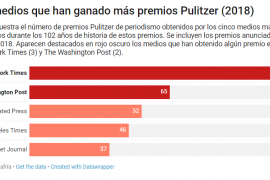[dropcap letter=”W”]
hen playwright Tony Kushner wrote Angels in America –one of the key theatre plays from the late 20th century, a diptych that received the Pulitzer Prize for Drama amidst George W Bush’s America–, he counted on its staging and its stark treatment of AIDS and homosexuality would set alight the most conservative sectors. This is precisely what happened in Catalonia when the first part of the diptych inaugurated the unbridled TNC in 1996, in the Golden age of Catalan political regime around the figure of conservative Catalan president Jordi Pujol: there was plenty of noise from the government’s top brass, with high-ranking officials highly offended by its sheer depravation.
 Probably, what Kushner would have never imagined is that, twenty years on, on the second staging of his work in Catalonia, it would be race and its portrayal what would cause even more turmoil because of the controversial characterization of a black character in the flesh of a white actor, as explained a few days ago in an article on blackface in Catalonia.
Probably, what Kushner would have never imagined is that, twenty years on, on the second staging of his work in Catalonia, it would be race and its portrayal what would cause even more turmoil because of the controversial characterization of a black character in the flesh of a white actor, as explained a few days ago in an article on blackface in Catalonia.
Be that as it may, Angels in America’s subtitle is «gay fantasy on American issues», and the insights of AIDS are manifold and intricate. At the stage of Sala Fabià Puigserver –incidentally, the founder of the Lliure Theatre died of AIDS in 1991– what made a stronger impact was the reaction of rejection of one of the characters, young Louis Ironson, on discovering that his other half is infected with AIDS. His negationist attitude and incapacity to stand by him through his downhill path –back then, there was no antiretroviral treatment whatsoever– were devastating.
But Angels in America is only one of the many creations that positioned AIDS at the forefront of cultural production of the 1990s, especially when the condition could affect white elites of the country. Among them, one of the most outstanding films Philadelphia (1993), apart from positioning Bruce Springsteen as a record-sales singer, spotlighted the condition for most worldwide population and de-stigmatized this pandemic –back then, AIDS was known as the “gay cancer”– with an attractive actor and an extraordinary interracial cast.
As regards visual arts, there were opposing insights into AIDS: some creators chose to approach it from provocation, as in the series Lethal Weapons by Barton Lidice Benes, exhibiting water pistols filled with infected blood, or the bloody-splattered performances by Ron Athey. At the other end of the spectrum from these direct and straightforward insights, there are more poetic and metaphoric approaches to AIDS, as those from the facilities by Cuban Félix González-Torres (who died of AIDS in 1996) dedicated to his partner Ross, another victim of AIDS from a few years before. Portraits of Ross made from candy batteries show the decline of the body and the representation of seeing how someone “disappears slowly in front of your eyes” as the viewer unwraps and eats the candy. By avoiding direct references to AIDS, González-Torres managed to knock down homophobic criticism and transform the same pieces into a universal appeal for love and loss, like in the installation filled with light bulbs Last light at the Macba collection, which has two additional works by the artist on consignment.
The Macba has just inaugurated Anarxiu SIDA, a research work by the Re team on the cultural and social impact of AIDS in Spain and Chile in the 1990s. The exposition can be visited until April at the Centre d’Estudis i Documentació in Barcelona, next to the much-photographed mural Together we can stop AIDS by Keith Haring, recovered by the museum four years ago and painted originally at Salvador Seguí Square in 1989, back when that Raval spot used to be a cemetery of syringes.



















